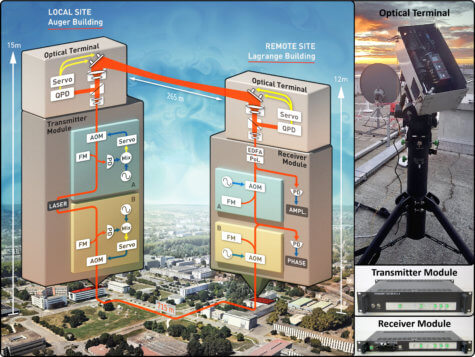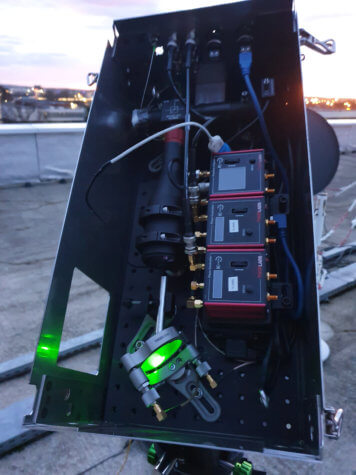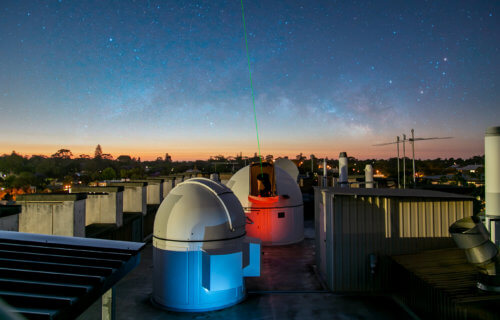WESTERN AUSTRALIA — With all the controversy surrounding the new, faster 5G networks launched around the globe, could there be another way to get a faster wireless internet connection? According to Australian scientists, there just may be. A new study shows that smartphones could speed up thanks to a record breaking laser signal sent from satellites — without any disturbance from the atmosphere.
The researchers from Western Australia University say their work opens the door to using optical systems via satellites, making communication faster, safer and cheaper. The breakthrough offers hope of streaming videos, such as Netflix or Hulu, in even the most remote regions on the planet.
It is also a step forward in the development of driverless cars, and a boost for future space missions to Mars and beyond.

Current data connections we use in daily life such as WiFi, Bluetooth or 4G are based on radio-frequency electromagnetic waves. Up to a hundred times more information can be sent using light, but there’s a snag. Just slight differences in pressure and temperature of the air change its path.
How satellites will improve communication technologies
The international team got around this issue using a technique called “phase stabilization,” producing the steadiest beam in history.
“It could help us increase the data rate from satellites to ground by orders of magnitude,” says senior author Dr. Sascha Schediwy, of the University of Western Australia, in a statement. “The next generation of big data-gathering satellites would be able to get critical information to the ground faster.”
Potential advantages include being able to download video faster and better communications between smartphones and even spaceships. It will also improve security for the armed forces, making it much harder to eavesdrop on them.
Europe’s space agency ESA and companies like SpaceX and Facebook already have ambitious plans with regard to such networks.
Future self-driving cars will need to be able to process huge amounts of data, including numerous images and signals.
Breaking through barriers created from Earth’s atmosphere
In experiments, self-guiding optical terminals enabled laser signals to be sent from one point to another without any interference. Lead author Benjamin Dix-Matthews, a PhD student at UWA, says the technology effectively eliminates the problem.
“We can correct for atmospheric turbulence in 3D, that is, left-right, up-down and, critically, along the line of flight,” he explains. “It’s as if the moving atmosphere has been removed and doesn’t exist. It allows us to send highly-stable laser signals through the atmosphere while retaining the quality of the original signal.”

These disturbances affect the shape, quality and intensity of the light beam collected and degrade the link. Moreover, in order to be effectively detected, the light is generally collected in a standard telecom optical fiber, which is used extensively in the telecommunications industry.
It is the world’s most precise method for comparing the flow of time between two separate locations using a laser system transmitted through the atmosphere.
Research could help test Einstein’s theory of relativity
The study, published in the prestigious British journal Nature Communications, has other exciting applications.
“If you have one of these optical terminals on the ground and another on a satellite in space, then you can start to explore fundamental physics,” says Dr. Schediwy. “Everything from testing Einstein’s theory of general relativity more precisely than ever before, to discovering if fundamental physical constants change over time.”
The precise measurements also have practical uses in earth science and geophysics.
“For instance, this technology could improve satellite-based studies of how the water table changes over time, or to look for ore deposits underground,” explains Dr. Schediwy.
The key phase stabilization technology was originally developed to synchronize incoming signals for the the world’s biggest radio telescope, the Square Kilometre Array.
The multibillion dollar project beginning later this year will create a network of thousands of devices. They could reveal the birth of planets and galaxies and the mysteries of dark energy, and will also join the search for signals from alien civilizations.
SWNS writer Mark Waghorn contributed to this report.
